How to choose a sanding machine for polishing parquet: an overview of modern technology
Sanding is a mandatory procedure to give a parquet a presentable appearance. With its help, you can smooth the wooden surface, clean scratches and cracks. Of course, grinding is not done manually, but using special equipment - grinding machines. A large number of such units are presented on the market, differing in type of design, purpose, mode of action. We indicate their main technical characteristics for optimal selection.
There are a huge number of varieties of grinders for parquet, but all of them can be combined into several groups:
- drum - the working surface is represented by a cylindrical shaft on which an abrasive belt (sanding paper) is installed;
- tape - the working surface is formed by an abrasive tape moving between two moving shafts (rollers);
- disk - polish the surface with disks (one or more);
- Vibrating - equipped with a vibrating working sole, making a “trowel” movement in the grinding process;
- eccentric (orbital) - the working sole rotates and vibrates at the same time.
Each of these types of equipment solves its own problems, has features of operation. Consider these nuances more clearly.
Content
Drum type machines
Drum grinder - a technique designed mainly for rough grinding. At the highest level, she also copes with scraping - removing the paint layer from the floor.
The principle of operation of drum machines is based on the rotation of a cylindrical shaft (drum), "started" by an electric motor. An abrasive tape is mounted on the shaft. When the drum rotates, it is closely pressed against the wooden surface and “erases” a layer of the provided thickness from it (depends on the grain size of the abrasive on the tape). On average, a drum machine removes a layer of 1-1.5 mm from the surface during the grinding stage. This is accompanied by the formation of wood dust and sawdust, so most models of drum machines are equipped with dust collectors.
The abrasive belts used for this type of grinder are rather rough - P24-40. Therefore, they can’t cope with polishing, and after a drum machine passes, it is usually necessary to modify other types of machines (disk, vibration, eccentric).
Any drum grinder is a massive unit moving on wheels. Weight can vary from 70 to 90 kg (average). The less weight (respectively, and dimensions) of the machine, the easier it is to manage, but its performance may be lower. If you have work in the apartment, then it is better to use a car with a lower weight. For large production areas, dimensional units are more suitable.
Performance is also directly dependent on power. The average value is 2.2 kW. The greater the power, the stronger the mechanical effect on the surface. And even more so a large drum (with a wide and long abrasive belt) such a machine will be able to "pull".
Belt Type Machines
Belt grinders are designed for preliminary grinding of the floor, leveling, cleaning and scraping.
In appearance, the belt-type grinder resembles a miniature caterpillar tractor. Its working surface is an abrasive tape glued into a ring, which moves between two rotating rollers, as on a conveyor. The width of the tape is 65-110mm. The sole on which the tape rests is made of a thin metal plate and supplemented with a soft backing.
The rotation speed of the abrasive tape is in the range of 150-500 m / min. Performance directly depends on this indicator. However, only if the additional speed will be supported by increased power. Otherwise, it will not be possible to “press” a rapidly rotating tape to the floor and increased speed will not improve the quality of the tool. The optimal speed value - 300 m / min - is achieved at a power of 650-700 watts.
To "press" the abrasive tape to the surface, the machine design is equipped with a metal platform of different sizes. Powerful professional models are equipped with a wide sole of 100 mm, ensuring their high performance and stability on the surface. For a hobby tool, a width of 75 mm is sufficient. Separately, it is worth mentioning the so-called "electric files" - machines with a very narrow working canvas (width from 6 mm), allowing you to get to the most inaccessible places.
About the technical characteristics and important features of working with tape grinders are described in the video (on the example of the Interskol LSHM-76/900 model):
Disc grinders
Typically, disk grinders are used to finish grinding the surface. The working element of this technique is a flat rotating disk on which abrasive material is fixed.
Disk grinders are divided into:
- Corner (angle grinder) - the well-known manual grinders, as well as specialized machines "boots". In the design of the angle grinder there is one disk rotating parallel to the axis of the tool.
- Surface grinding discs - overall units having 1-3 discs rotating around their own and central axes.
Disc surface grinding machines
Disc grinders are equipped with one or three discs on which abrasive wheels are fixed. Discs spin around their axis and thereby “smooth out” the wooden surface. A similar principle of operation, combined with a floating fit of the discs, allows high-quality polishing of the surface after preliminary processing by tape or drum machines.
Angle Grinders (angle grinders)
Angle grinder is an alternative to expensive surface grinding machines when processing small surfaces, as well as in hard-to-reach places - under batteries, pipes, in corners and niches, near baseboards and walls. The working surface of the angle grinder is a flat disk on which an abrasive tool is mounted.
The most affordable angle grinder is a grinder. For coarse grinding, you can use the flap wheels. They consist of a rigid base on which strips of sandpaper are fixed in a circle. Fine grinding is best done using a rubber nozzle under the Velcro circles (different grit).
"Boot" is another manual angle grinder. In its shape, it resembles a boot with a flat base, under which the grinding disc is hidden. Thanks to this design, it is very convenient to use the “boot” to process areas located close to walls, places under batteries or pipes.
Vibratory Sanders
The vibration grinder is a compact universal tool used for coarse and fine grinding of various wooden surfaces, including parquet. In the process, the rectangular sole of the machine vibrates, making high-speed reciprocating movements of small amplitude. With increasing stroke amplitude, the grinding speed also increases, but the quality of processing decreases.
On the sole of the vibratory grinder, sandpaper or an abrasive mesh of varying degrees of graininess is fixed.The paper can be fastened with Velcro or with side clips. Metal clamps are used in most designs, as they allow you to securely attach sanding paper (mesh) of any manufacturer to the sole.
The sole - the working element of vibration grinders - can have a different size. The most popular cars with traditional sole sizes (“standard”) are approximately 100x200 mm. But for narrow, hard-to-reach places, mini-aggregates with dimensions of about 10x10 mm are more suitable.
The platforms of most grinders are rectangular or square. Apparatus with a triangular sole are classified as a separate class. They are intended for processing corners, stair elements, surfaces of complex shape. Triangular platforms of some models are rotary and removable (for the possibility of installing another platform).
The base of the soles of budget models is most often steel or plastic, while the more expensive counterparts are made of aluminum or magnesium alloys. In any case, a high-quality sole is characterized by a small amplitude of vibration when idling (without load). A soft rubber or finely porous polymer pad is attached to the working surface of the sole. The polymer is denser than rubber, so it better “holds” the plane.
Most models of this type of grinder have an engine with a power of 150-300 watts. They are lightweight, maneuverable, but at the same time they do an excellent job with their grinding function. There are more powerful cars, for example, Makita 9046 (600W). They differ in larger sizes and weight, so it is more difficult to manage with them. However, such machines have a significant advantage: they are able to work at low speeds without interruption (and overheating!) And get a better processing result.
The amplitude of the stroke of the soles of vibrating machines is always small, ranging from 1-6 mm. 5-6 mm is the largest amplitude that allows you to quickly grind the surface. But the processing will be quite rough. The smaller the amplitude, the better the grinding will be.
Another important characteristic is speed. At high speed, the machine is able to quickly remove a thick layer of wood. This corresponds to coarse grinding. Finishing fine grinding is possible when using the machine with a low speed. Many well-known manufacturers produce models with adjustable speed, which makes it possible to customize the tool for different processing purposes and for different materials.
A small overview to understand what to look for when choosing a vibratory grinder:
Eccentric Sanders (Orbital)
The eccentric machine (ESM) works on the principle of combining vibration and rotation. It can be said that vibration and disk grinders are combined in one device. The result of this combination is excellent surface finish combined with high productivity. ESM working platform - round disk (“plate”).
Eccentric grinders are considered universal. They are suitable both for coarse grinding (looping) and for finishing polishing with large volumes of work.
The thickness of the removed wood layer can be adjusted by pressing the platform harder or harder. Performance can also be adjusted by changing the diameter of the circle of vibration (eccentric stroke). The lower this indicator, the lower the productivity, but the better the quality of processing. And vice versa. Therefore, for primary grinding, large circles of vibration are installed on the machine, and for the final (polishing) - small.
Modern ESMs are characterized by engine power of 200-900 watts. More powerful models are also more productive. They are able to work with larger soles, with a diameter of up to 150 mm.
Rotational movements of the grinder with adjustment can be performed at a speed of 4000-14000 rpm.If there is no adjustment, then this figure drops to 12,000 rpm. The speed of oscillatory movements is approximately two times lower. The greater the speed of the machine, the rougher the grinding can be, but the higher the productivity.
For work, the size of the grinding sole is also very important. The most common grinders have a “plate” diameter of 115 mm, 125 mm and 150 mm. Usually, the name of the instrument already has a number indicating the size of the sole. Large "plates" are designed for processing large flat areas, so they are equipped with machines with high power and productivity. Grinding by a machine with a small “plate” will take longer, however, it can precisely handle narrow and inaccessible places.
Help in choosing can be provided by a video review, where several grinders from different manufacturers passed the test for “professional suitability”:
Tips that come in handy when choosing
If you have decided on the optimal type of grinder, then it remains to choose a specific model. For this, the following tips come in handy:
- For home use, a professional expensive model is not needed. If you plan to use the grinder once or periodically (for repairing the surface, for example), then the “hobby” class tool will be the best choice. High-quality models are produced by Bosch, Skil, Sparky, Black & Decker, Interskol and Fiolent (Russian manufacturers).
- Of great importance is the weight and dimensions of the tool. Especially if this tool is manual and you have to work with it while holding it in your hands. For small volumes, it is better to prefer a less powerful, but more compact, lightweight and high-speed model.
- Pay attention to ergonomics. You need to be comfortable working with the tool. Look where the switches are located, how simple (or difficult) the abrasive materials change, if the power cord will interfere with the work.
- Test the machine right in the store. Turn it on, let it idle. So you can evaluate the level of outgoing noise and vibration.
- Inspect the machine visually. All body parts must be precisely matched to each other. Eliminate the presence of play on the drawers.
- Ask the seller how easy a particular machine is being repaired.
- Ask about the range and cost of consumables (abrasive) materials.
Only after fully familiarizing yourself with these points can you make the final choice.

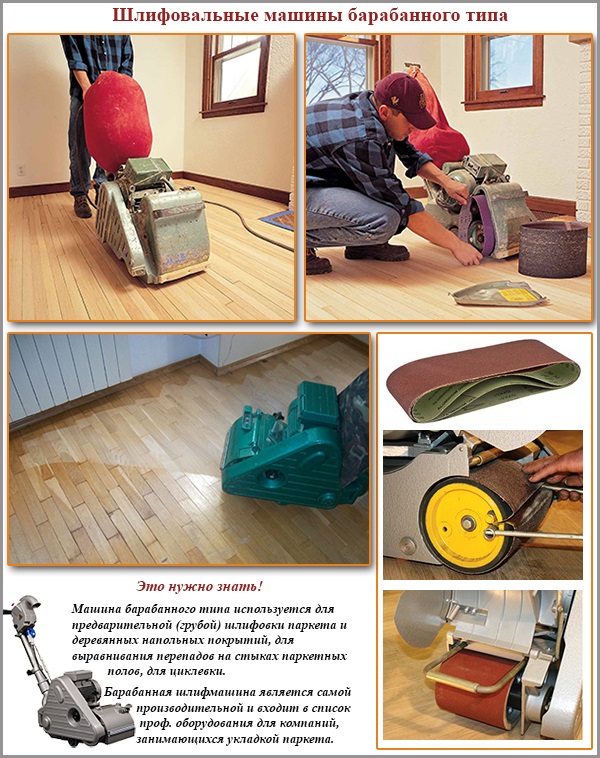

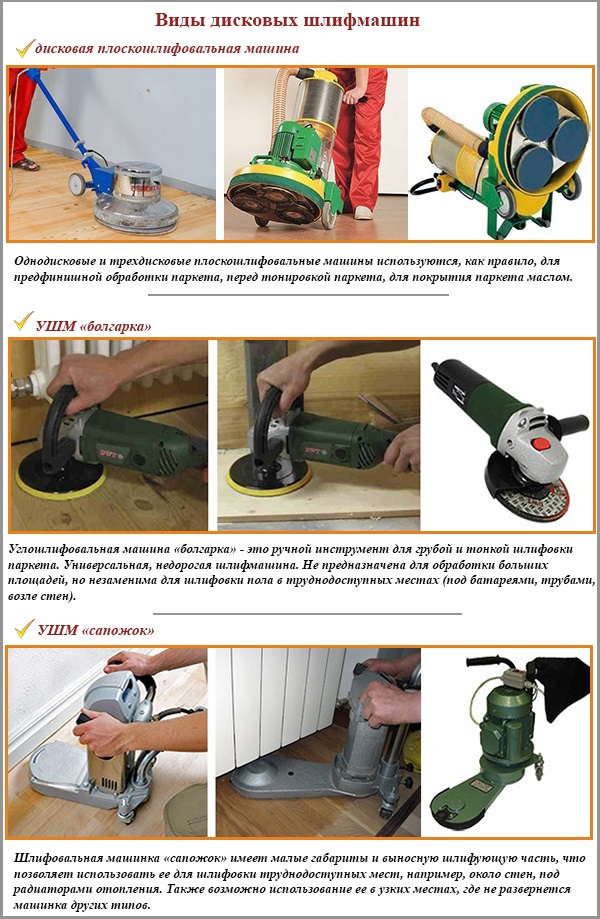
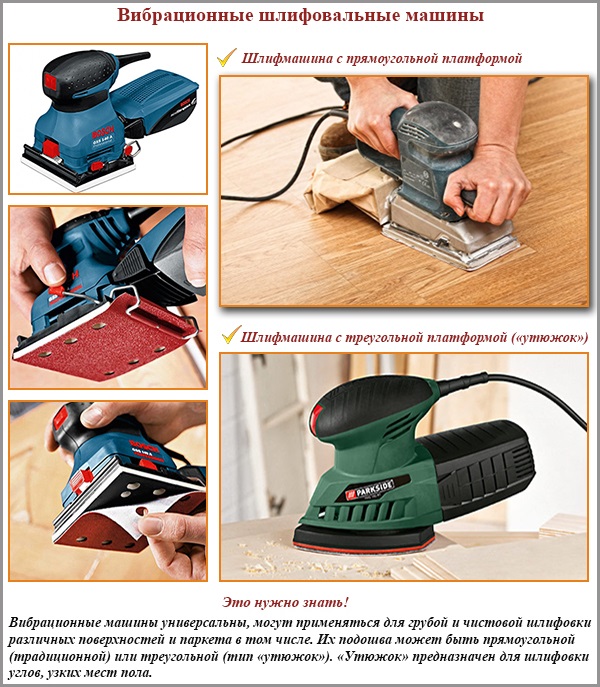


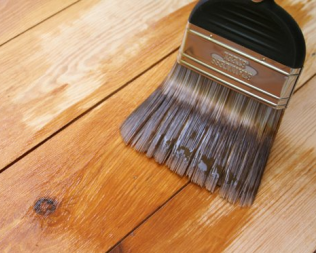
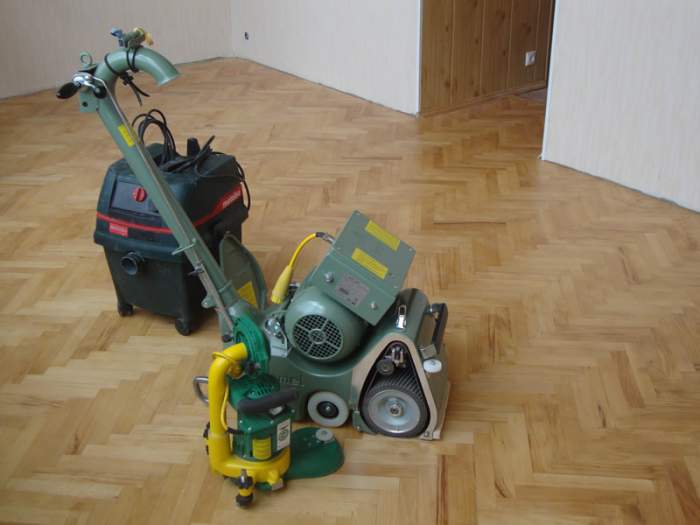
2 comments